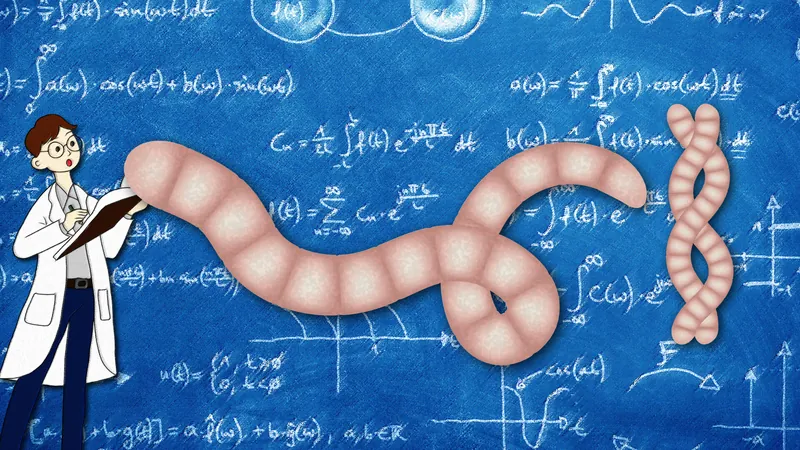
Breaking News: Scientists Achieve Unprecedented Accuracy in Animal Movement Simulation – The Future of Robotics and Medicine Unleashed!
2024-10-02
Author: Wei
Scientists Achieve Unprecedented Accuracy in Animal Movement Simulation
In a groundbreaking study, researchers have unveiled a revolutionary method to accurately simulate the complex movements of animals, a feat that has eluded scientists for decades. This innovative approach focuses on the tiny nematode worm, Caenorhabditis elegans, a staple in biological research, and promises to reshape our understanding of animal behavior.
Published in the prestigious Proceedings of the National Academy of Sciences, this research not only sheds light on the intricacies of animal movements but also holds immense potential across various fields – from robotics to medical applications. Professor Greg Stephens from the Okinawa Institute of Science and Technology (OIST), who spearheads the Biological Physics Theory Unit, noted the complexity involved: “Unlike simple physical systems, animal behavior operates in a realm between regular and random actions. We've achieved a level of accuracy in modeling that has never been seen before.”
The Complex Nature of Animal Movement
Delving into the heart of the study, the researchers highlighted that an animal's behavior is influenced by a myriad of factors, including its inner state, life experiences, and genetics. “Building a predictive model that encapsulates this complexity is both remarkable and somewhat counterintuitive,” said Dr. Antonio Costa, lead author from the Paris Brain Institute at Sorbonne University.
The modeling process involved advanced techniques. Researchers began by capturing high-resolution videos of the worms in action. Using machine learning, they meticulously tracked the worms’ shapes frame by frame, allowing for an analysis of behavioral changes over time. By comparing their simulations to real-world data on movement speed and behavioral shifts, the team confirmed the exceptional accuracy of their model.
Transforming Medicine and Robotics: The Ripple Effects
The implications of this research stretch far beyond the scope of nematodes. The team is already in discussions with companies using these worms to analyze the impacts of chemical compounds on behavior, showcasing the model’s versatility. Excitingly, the researchers are applying their findings to other species, such as zebrafish larvae – widely utilized in drug discovery. What's more, they’re tapping into the realm of human health by examining movement disorders like Parkinson’s disease.
Current diagnostic methods for motion-related conditions often depend on fleeting clinical observations, making it difficult to detect subtle changes in movement patterns. This new model could revolutionize diagnostic techniques by offering continuous, objective measurements of patient movements – even at home. Such advancements could lead to earlier detection, more accurate diagnoses, and personalized treatment strategies tailored to individual needs.
But that's not all! The potential applications extend into robotics, where achieving fluid and natural movements has been an elusive goal. With deeper insights into how animals navigate their surroundings, engineers could develop more sophisticated and adaptable robotic systems, paving the way for innovations in various industries.
Conclusion
In summary, this remarkable advancement in behavioral modeling not only enhances our grasp of animal movements but also opens doors to transformative applications in both healthcare and technology. Stay tuned as we continue to follow the fascinating developments emerging from this groundbreaking research!

 Brasil (PT)
Brasil (PT)
 Canada (EN)
Canada (EN)
 Chile (ES)
Chile (ES)
 España (ES)
España (ES)
 France (FR)
France (FR)
 Hong Kong (EN)
Hong Kong (EN)
 Italia (IT)
Italia (IT)
 日本 (JA)
日本 (JA)
 Magyarország (HU)
Magyarország (HU)
 Norge (NO)
Norge (NO)
 Polska (PL)
Polska (PL)
 Schweiz (DE)
Schweiz (DE)
 Singapore (EN)
Singapore (EN)
 Sverige (SV)
Sverige (SV)
 Suomi (FI)
Suomi (FI)
 Türkiye (TR)
Türkiye (TR)